
Giovanni Antonio Canal, commonly known as Canaletto, was an Italian painter from the Republic of Venice, considered an important member of the 18th-century Venetian school.
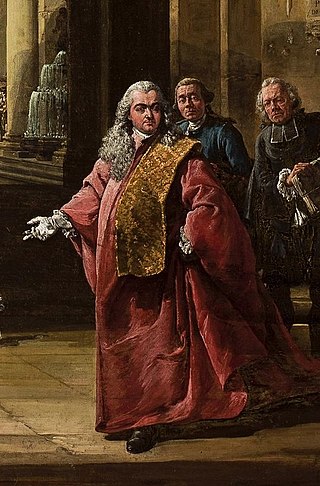
Bernardo Bellotto, was an Italian urban landscape painter or vedutista, and printmaker in etching famous for his vedute of European cities – Dresden, Vienna, Turin, and Warsaw. He was the student and nephew of the renowned Giovanni Antonio Canal, known as Canaletto, and sometimes used the latter's illustrious name, signing himself as Bernardo Canaletto. In Germany and Poland, Bellotto called himself by his uncle's name, Canaletto. This caused some confusion, however Bellotto’s work is more sombre in color than Canaletto's and his depiction of clouds and shadows brings him closer to Dutch painting.
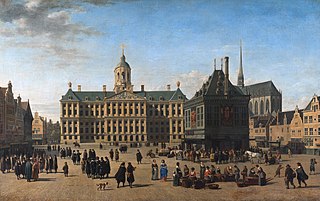
In the visual arts, a cityscape is an artistic representation, such as a painting, drawing, print or photograph, of the physical aspects of a city or urban area. It is the urban equivalent of a landscape. Townscape is roughly synonymous with cityscape, though it implies the same difference in urban size and density implicit in the difference between the words city and town. In urban design the terms refer to the configuration of built forms and interstitial space.
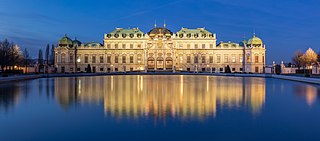
The Belvedere is a historic building complex in Vienna, Austria, consisting of two Baroque palaces, the Orangery, and the Palace Stables. The buildings are set in a Baroque park landscape in the third district of the city, on the south-eastern edge of its centre. It currently houses the Belvedere museum known in German as the Österreichische Galerie Belvedere. The grounds are set on a gentle gradient and include decorative tiered fountains and cascades, Baroque sculptures, and majestic wrought iron gates. The Baroque palace complex was built as a summer residence for Prince Eugene of Savoy.

The Kunsthistorisches Museum Wien is an art museum in Vienna, Austria. Housed in its festive palatial building on the Vienna Ring Road, it is crowned with an octagonal dome. The term Kunsthistorisches Museum applies to both the institution and the main building. It is the largest art museum in the country and one of the most important museums worldwide.

Heldenplatz is a public space in front of the Hofburg Palace in Vienna, Austria. Located in the Innere Stadt borough, the President of Austria resides in the adjoining Hofburg wing, while the Federal Chancellery is on adjacent Ballhausplatz.

Palais Rothschild refers to a number of palaces in Vienna, Austria, which were owned by members of the Austrian branch of the Rothschild banking family. Apart from their sheer size and elegance, they were famous for the huge collections of valuable paintings, statues, furniture, books and armour that they housed, another reflection of the family's vast wealth and prominent position.
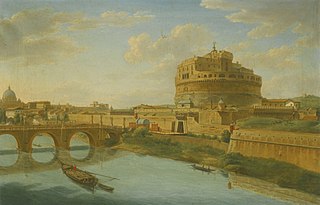
A veduta is a highly detailed, usually large-scale painting or, more often, print of a cityscape or some other vista. The painters of vedute are referred to as vedutisti.

The Palais Lanckoroński was a palace in Vienna, Austria, located at Jacquingasse 16-18, in the Landstraße District. It was constructed in 1894-95 for Count Karol Lanckoroński and his family as a personal residence, and it housed the count's enormous art collection. The palace was built in a neo-baroque style by the theatre architects Ferdinand Fellner and Hermann Helmer. The building was three stories high, set back from the street, and protected by a wall with double gates. The entrance hall was wood panelled, two stories high, and decorated with portraits of the family. Other festive halls were decorated with frescoes and luxurious gobelin tapestries from the 17th century. Precious paintings, furniture and sculpture from different eras were arranged to form themed ensembles in the various rooms, with the rooms named to reflect the collection housed within. The palace was severely damaged in World War II, and was torn down in the 1960s.
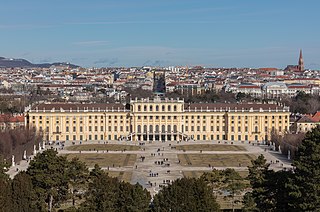
The tourist attractions of Vienna concentrate in three distinct areas. The largest cluster, centred on Schönbrunn Palace, attracted around five million visitors in 2009, down from six million in 2008. Museums and exhibitions of Hofburg Palace accounted for nearly two million visitors in 2008, with a significant decline in 2009. The third, and the newest, cluster of modern art museums in Museumsquartier attracted less than one million visitors. Nearby duo of Kunsthistorisches and Naturhistorisches museums, located halfway between Museumsquartier and Hofburg, also reported around one million visitors. The Landstraße district, which lies south-east of the old city, is home to art exhibitions at the Belvedere Palace and the KunstHausWien.
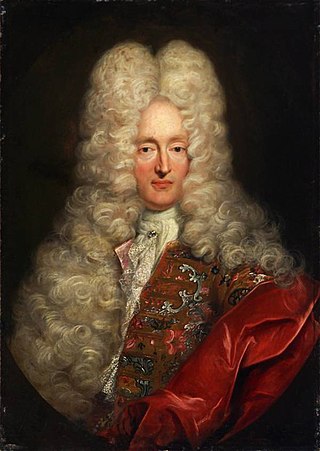
Frans van Stampart was a Flemish portrait painter, printmaker and publisher. The artist established a reputation as a portraitist of European rulers, aristocrats and higher clergy. He had an international career, which brought him to the court in Vienna where he worked as court painter of the Imperial court. He is also known as the co-publisher of two publications which depict the Imperial art collection in Vienna and for which he also made some of the engravings.

The Grand Canal in Venice from Palazzo Flangini to Campo San Marcuola is a painting by Canaletto in the J. Paul Getty Museum in Los Angeles, California. Painted around 1738, it may have been commissioned by the English merchant and art collector Joseph Smith (1682–1770).

Jan Anton van der Baren was a Flemish painter, draughtsman, priest and museum curator active in Brussels and Vienna. He specialised in still lifes of flowers and vegetables, some of which include an architectural background. He held the offices of court chaplain and director of the picture gallery of Archduke Leopold Wilhelm and Emperor Leopold I.
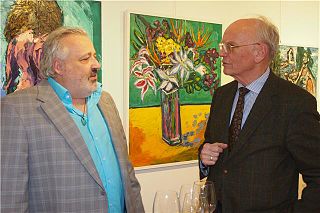
Helmuth Gräff is an Austrian painter, drawer and poet. Gräffs painterly style is rooted on the one hand in the artistic heritage of Vincent van Gogh, and on the other hand he can also be regarded as a precursor or heritage of the Neuen Wilde.

Dresden From the Right Bank of the Elbe Below the Augustus Bridge is an oil painting on canvas executed in 1748 by the Italian urban landscape painter Bernardo Bellotto. It depicts the view of Dresden from the right bank of the River Elbe, including the Dresden Frauenkirche, the Dresden Cathedral, and the Augustus Bridge. One year earlier, he painted another piece titled Dresden From the Right Bank of the Elbe Above the Augustus Bridge, looking in the other direction from above the Augustus Bridge. Both of the paintings are in the permanent collection of the Gemäldegalerie Alte Meister. The paintings have proved invaluable in rebuilding parts of the city that were destroyed during the World War II.

The following outline is provided as an overview of and topical guide to Vienna:

The Imperial Pleasure Palace Schönbrunn, Courtyard Side, in German: Das kaiserliche Lustschloß Schönbrunn, Ehrenhofseite, is a painting created in 1759–1760 by the Italian painter Bernardo Bellotto. It depicts the palace of Schönbrunn in Vienna, after a renovation in 1744–1749 by Nicolò Pacassi. It measures 135 cm × 235 cm in size and is located at the Kunsthistorisches Museum in Vienna, Austria. The work captures the historic moment on August 16, 1759, when empress Maria Theresa received the message that the Austrian army had won in battle against the Prussians at Kunersdorf.

Friedrich Schilcher was an Austrian portrait, genre, and history painter, and decorative designer.

The Imperial Armoury, formerly known as Waffensammlung, is a collection of the Kunsthistorisches Museum Vienna. Together with the armoury at Ambras Castle near Innsbruck, which is also part of the KHM museum group (KHM-Museumsverband), it comprises the arms assembled by the Austrian branch of the Habsburg dynasty. It is one of the largest and best documented historical collections of arms and armour in the world. First published in 1601, the Armamentarium Heroicum – an illustrated inventory of the Ambras ‘Heroes’ Armoury’ that forms the core of the Imperial Armoury - is the oldest museum catalogue in the world. Due to the extensive publications of former directors such as Wendelin Boeheim and Bruno Thomas, the collection is also regarded as the nucleus of modern scholarship on arms and armour.





















